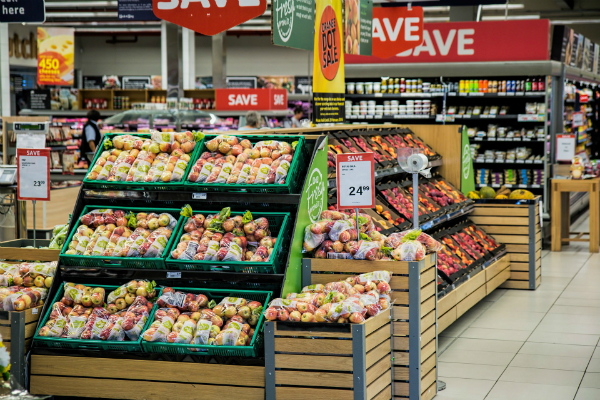
A guest post by our friends from Pivotal Payments.
According to a 2017 survey from BigCommerce, 51% think shopping online is best, while 49% prefer shopping in-store. Alarmists have heralded the death of retail, as online shopping continues to dominate and technology continues to revolutionize the way we shop. But instead of rolling over, physical retailers can use this so-called “retail apocalypse” as a catalyst to evaluate their approach to customer experience – perhaps the one edge they have over their cyber counterparts.
When competing with e-commerce powerhouses like Amazon, focusing on price is a losing battle as shoppers come armed with their smartphones, ready to compare deals. Retailers simply can’t compete; discounting and price-matching is only suitable as a short-term strategy, eventually leading to low-profit margins.
Instead, concentrating efforts on creating a memorable in-store experience will foster consumer loyalty and keep shoppers coming back. Here are four tactics to elevate the consumer experience inside the shop:
Leverage Omni-Channel Fulfillment Methods
Online and in-person shopping is becoming more integrated thanks to omni-channel strategies such as ship-from-store, which allows retailers to fulfill orders by having products delivered from nearby stores rather than far-off warehouses. Consumers receive their item faster, at a reduced shipping cost for the retailer.
The click-and-collect program is also gaining momentum, offering the convenience of online shopping without having to wait for items to ship. Orders are placed online and picked up at a local branch. So far, the service is mainly seen in grocery stores here in Canada, but progression toward this trend is expanding: clothing retailer Zara recently launched a click-and-collect pop-up store in London.
Keep Shelves Stocked and Prices Up-To-Date
 CNBC recently reported that out-of-stocks, overstocks, and returns are costing retailers a whopping $1.75 trillion per year. To combat the first problem, major retail chains have started implementing smart shelf technology that uses embedded sensors to alert retailers of low inventory and allow them to update prices in real – time. The aim is to automatically ship products to the store when inventory is running low to avoid any lag time when items are temporarily out of stock.
CNBC recently reported that out-of-stocks, overstocks, and returns are costing retailers a whopping $1.75 trillion per year. To combat the first problem, major retail chains have started implementing smart shelf technology that uses embedded sensors to alert retailers of low inventory and allow them to update prices in real – time. The aim is to automatically ship products to the store when inventory is running low to avoid any lag time when items are temporarily out of stock.
In another move to improve the in-store experience, Walmart US shifted overnight stocking shifts to daytime hours in select concept stores. This allows for more employees on the floor during business hours and more products on the shelves, as items are replenished as needed throughout the day.
Engage the Senses
The biggest advantage physical retailers have over e-retailers is giving customers the opportunity for interaction: tactile, visual, auditory – even human. Take Indigo, for instance: The opening of their first “cultural department store” at the Sherway Gardens location last year marks the upgrade from the original Chapters model to an unparalleled shopping experience. Themed vignettes throughout the store make merchandising a work of art, with product offerings ranging from stationary and home décor to baby items and vinyl records. Many locations now present live music and book signings with local authors; and of course, Starbucks remains a staple. Self-serve kiosks and mobile apps integrate digital technology for a well-rounded and exciting customer experience.
The takeaway here is for physical stores to offer what online retailers cannot: the chance for customers to touch, feel and test out merchandise and engage in their surroundings. It has to be worthwhile for them to get off the couch and away from their computers.
Sell on Emotion – Not on Logic
A 2015 Global State of Multichannel Customer Service Report stated 97% of global customers say customer service is either very important or somewhat important in their choice of and loyalty to a brand. And a good in-store experience is often much more memorable than buying online. Consider the emotional appeal of a couple excitedly picking out an engagement ring; girlfriends trying on party dresses; children’s eyes widening when they enter a toy store. These experiences can’t be replicated when shopping from a screen.
To capitalize on the emotional side of shopping, retailers need to employ happy, confident and knowledgeable sales staff who can connect with consumers on a genuine level. Rewards and loyalty programs offer incentive and help customers feel their business is appreciated. Paying attention to details like store temperature and background music can also go a long way to keep customers comfortable (and keep them shopping longer).
Taking price out of the equation and considering the merchandise a souvenir of a great shopping experience – this is how brick-and-mortars can survive against the behemoths in the online jungle.
____
One more tip from CrossCap to add to the above list: implementing retail tech can add a competitive edge to the brick-and-mortar stores’ operations and enhance customer experience, whether it’s an agile POS or P.O.P in-store marketing solutions that can help you gain control over your in-store visual elements thus ensuring a consistent brand experience across all locations and clarity of the promotional offerings.
How Brick-and-Mortar Stores Can Enhance Customer Experience to Compete Against Online Retailers2018-02-012018-03-22https://www.crosscap.com/wp-content/uploads/2017/09/crosscap-dark-logo.pngCrossCaphttps://www.crosscap.com/wp-content/uploads/2018/01/how-brick-and-mortar-stores-can-enhance-customer-experience-to-compete-blog.jpg200px200px

